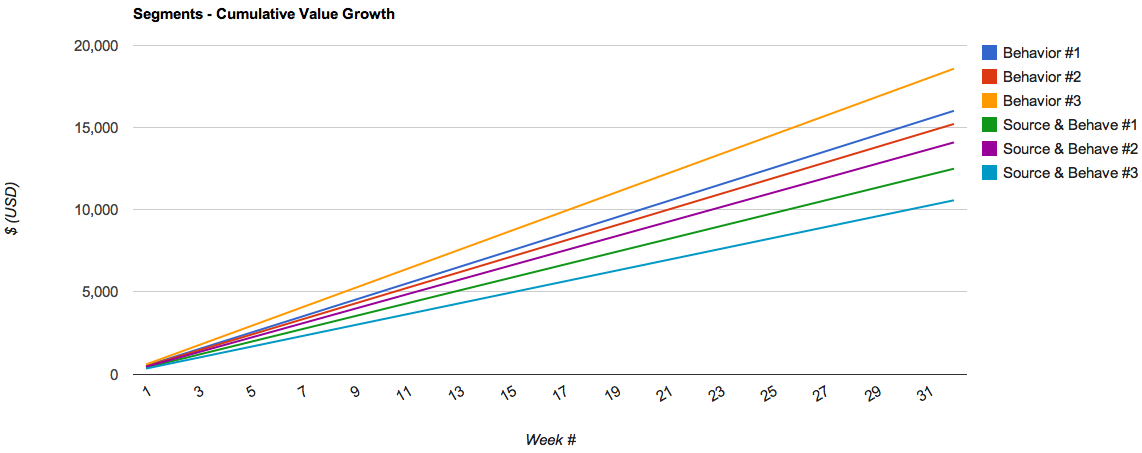
Measuring value by different segments
Web Analytics could get pretty complicated especially when you start thinking about different segmentation ideas.
The key question to ask is, what segments have the most value?
It is imperative that we understand the segment with high value so that you can focus on measuring value by different segments.
I say this because in my experience there are a lot of marketers who aren’t taking action because of following reasons:
- They want more metrics and lost focus on the KPIs2) Don’t know what action to take to move the needle
- Don’t know what action to take to move the needle3) Don’t understand the performance value of the digital channel or medium
- Don’t understand the performance value of the digital channel or medium
- They don’t know how much incremental value their marketing efforts are adding to the baseline
Points 1 and 2 are something you can improve by communication and educating the users.
Point 3 and 4 got me thinking about segmentation. A typical case that we segment data on are by key acquisition sources, but we need to talk more about different data attribute mix than acquisition channels.
A typical case that we segment data on are by key acquisition sources, but we need to talk more about different data attributes and mixes than a typical acquisition sources where ad dollars are spent.
Examples of segmentations could be structured by user behavior, customer profile, survey results, sources, device types, recency or frequecy factor.
Here is a graphical example showing how different segments could show different value taking eCommerce as a business case.
As you can see when you start segmenting by different combos of behavior, sources, or product category, or outcomes you’ll see that certain segments are going to growth faster than the other.
Taking cumulative sales from a particular point in time could show you how it fans out from the other segment.

The important thing that analysts need to do is dive into understanding what makes that one segment growing more than the other. That makes our job really fun as a web analyst.
We can now then dive into the actionable insights that make marketers and eCommerce folks realize what segment is really driving the sales growth.
- Is it the bounce rate that is causing one segment to perform below than the other?
- Is it the budget and skewed allocation of efforts that is driving the business?
- Is it the emails or paid search that is closing the sales than the other segment? What traffic source is driving that segment to grow?
- Are their attribution mix that drives better lift over the other segments? Organic -> Paid or Paid -> Organic converts better?
Giving this kind of visibility to marketers will help them focus on what’s working and find further opportunities to optimize what’s not working as well.
You don’t need to segment on everything possible. It is best advised to start from few dimensions of data and expand deeper and wider.
What works for me, is to set aside several hypothesis and work on critical few sements based on similar dimensions like pages visited, sources of traffic, device type, and visitor type.
Start simple and dive deeper as you get comfortable doing segmentations.
Thank you so much for taking the time to read my content. If you've liked what I've had to say please subscribe!
ZoomMetrix Newsletter
Join the newsletter to receive the latest updates in your inbox.